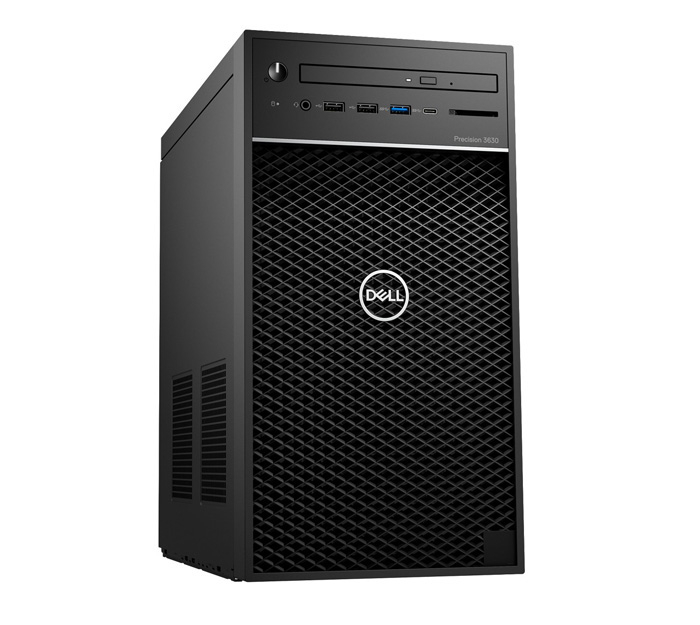Dell’s latest 15.6-inch mobile workstation comes in at an incredible 2kg but still packs a punch.
- Intel Core i7 4702HQ CPU (2.20 – 3.20GHz) (4 cores, 8 threads)
- 16GB (2x8GB) 1,600MHz DDR3 memory
- Nvidia Quadro K1100M (2GB) GPU
- 256GB mSATA SSD + 500MB 5,400rpm Solid State Hybrid Hard Drive
- 15.6” QHD+ (3,200 x 1,800) UltraSharp, 5 finger multi-touch, LED-backlit screent
- Mobile Intel HM87 Express chipset
- 8mm-18mm x 372mm x 254mm
- 1.88kg
- Microsoft Windows 8.1 Pro (64-bit)
- 1 year basic warranty – NBD included
- £1,499 CA001PM38009MUMWS (E-value code)
- dell.co.uk
The problem with most mobile workstations is that they’re not particularly mobile. The majority of 15-inch models weigh in at just under 3kg; 17-inch models even more. While this might not sound like a lot, try carrying half a dozen tins of baked beans around for the day and you’ll soon get the idea.
Dell’s new Precision M3800 is specifically designed to deliver workstation-class components in a lightweight package. This has been attempted before but has often been at the expense of screen size and graphics performance (remember the 14-inch Dell Precision M2400?).
With Dell’s latest offering there are no such compromises: the Precision M3800 is an entirely new class of mobile workstation. It sports an expansive 15.6-inch screen but it still feels incredibly light in the hand and there’s enough grunt in the GPU to handle decent sized BIM models.
Starting at 1.88kg it weighs less than a 13-inch MacBook Pro, from which it arguably takes many of its styling cues. And while its aluminium frame and lightweight carbon fibre base is not quite in the same league as the unibody aluminium chassis of the MacBook Pro, it does feel refined and well built. But, for want of a better analogy, this is a bit like comparing apples with pears. The MacBook Pro may be a great all-round laptop, but the Dell Precision M3800 is an entirely different beast; a proper 3D CAD mobile workstation, certified for a wide range of applications including Autodesk AutoCAD and Revit.
Inside, Dell is very prescriptive with the core specifications and all models share the same CPU and GPU. This is quite unusual for a laptop and partly down to the strict thermal limits dictated by the compact chassis.
Rated at 37W and 45W respectively the Intel Core i7-4702HQ CPU and Nvidia Quadro K1100M GPU are pretty easy on power consumption and together they offer a good balance of performance, ideally suited to entry-level to mid-range 3D CAD. Both have dedicated fans to help minimise throttling when the processors really start to heat up.
The Intel Core i7-4702HQ is not the fastest ‘Haswell’ CPU out there — the Intel Core i7-4900MQ, available in the Dell Precision M4800, is a full 0.6GHz faster — but with a base clock speed of 2.2GHz (3.2GHz Turbo) it’s still a good spec for mainstream CAD. With four cores and eight threads there’s also power in reserve for rendering and simulation — though with a maximum of 16GB RAM datasets can’t get too big.
For graphics the Quadro K1100M is at the lower end of Nvidia’s Kepler family of mobile GPUs. Our tests show that this 2GB GPU should be sufficient for working with small to medium BIM models but will probably start to show its limitations as models get larger.
The choice of core specs may be limited, but the M3800 certainly makes up for this when it comes to storage. Users have a number of options for the main 2.5-inch drive including a Hard Disk Drive (HDD) (up to 1TB); Solid State Hybrid Hard Drive (SSHD) (500GB with 8GB SSD); or Solid State Drive (SSD) (256GB or 512GB). There’s also room for Solid State Mini-Card storage device (mSATA) (up to 512GB), which gives users a cost effective way to get performance and capacity in the one machine. Our test machine achives this with a 256GB mini-card for operating system and apps and a 512GB SSHD for data.
The Precision M3800 comes with a choice of two Gorilla Glass FHD or QHD+ UltraSharp displays. Detailed CAD models on our test machine’s QHD+ display (3,200 x 1,800) certainly looked stunning with crisp lines and vibrant colours. However, with such a high pixel density we did find some of the icons were too small, even with the Windows settings ramped up.
With nearly three times as many pixels as the standard FHD display (1,920 x 1,080) we would also expect the QHD+ screen to have a small but significant impact on 3D performance in some applications. Choosing a display needs careful consideration.
Both displays feature 5-finger multi-touch as standard, which will have the greatest appeal to users of Windows 8. For more traditional input the gesture enabled multi-touch touchpad is of a good size, which makes it useful for CAD. Of course, for detailed work there’s no substitute for an external mouse, which can plug into one of the four USB ports (3 x USB 3.0 and 1 x USB 2.0). All four ports feature PowerShare, which is great for charging SmartPhones and other devices as the power remains on even when the machine is switched off.
There are some downsides of the sleek chassis: to keep size and weight to a minimum there’s no optical drive, but this can be easily remedied with a USB DVD drive or mapping to another drive on the network.
In conclusion, the Precision M3800 is an impressive machine for those seeking workstation-class performance and true portability without compromising on screen size. Some may find the specs restrictive — and if you want to beef up the CPU, GPU and memory then look at the Precision M4800 — but if you’re after a highly mobile laptop for 3D CAD then the Precision M3800 is in a class of its own.
If you enjoyed this article, subscribe to AEC Magazine for FREE






